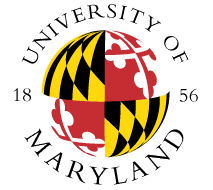Chesapeake Bay Foundation: Chicken Litter: The Sky is Falling Webinar
Introductory Material
Name of Presenter/Organizer/Institution: Chesapeake Bay Foundation
Title of Presentation/Talk/Event: Chicken Litter: The Sky is Falling Webinar
Name of Series: BEC Learning Series
URL of Online Presentation: https://www.youtube.com/watch?v=jK_6rkbQwQU
The Chesapeake Bay has many pollutants but the main primary pollutants 3 are nitrogen, phosphorus, and sediment. These pollutants are entering the Bay through 4 primary sources, stormwater runoff, wastewater, air pollution, and agriculture, with agriculture being the largest source. The footprint of the poultry industry has a large impact on Chesapeake Bay pollution. The trend of the structure of the chicken industry over the last 20 years is that the number of chickens growers decreased while the pounds of chicken processed increases meaning that there are more concentrated amounts of manure in a single region. When manure is used as a fertilizer for plants, phosphorus builds up in the soil. This phosphorus is then washed into the waterways through runoff. Ammonia is a nitrogen-based gas that is emitted from poultry and livestock waste. It can deposit directly into waterways or onto land where it is then washed into wat6er ways. The total amount of ammonia deposited into the Chesapeake Bay is increasing. An air model was developed in order to estimate nitrogen deposition due to ammonia emissions in MD. Another study was then done to estimate how much of that nitrogen was actually delivered to tidal waters from poultry operations. The state of Virginia requires producers with 20k chickens or 11k turkeys to have a permit. The permit requires protective storage of litter, land application consistency with nutrient management plans, and reporting records for brokers and keeping records for end users. The permit does not require anything to address ammonia emissions. One issue with the permit is that there is no meaningful way to address ammonia.
The main points of the presentation are convincing due to the clear connections made between agricultural practices, especially poultry farming, and the increasing pollution levels in the Chesapeake Bay. The data provided on the concentration of manure, phosphorus buildup, and ammonia emissions effectively highlight how intensified agricultural practices contribute to nutrient runoff and air pollution, which ultimately affect water quality. Another strength of the presentation is its use of data-driven insights, such as the air model developed to estimate nitrogen deposition and the study assessing nitrogen delivery to tidal waters. The use of specific studies, such as the air model to estimate nitrogen deposition and the subsequent analysis of its delivery to tidal waters, lends scientific credibility to the arguments. These scientific tools demonstrate the presenters' commitment to evidence-based solutions and provide a foundation for informed policy recommendations. Additionally, the focus on specific regulatory frameworks, like Virginia's permit requirements for poultry operations, offers a perspective on how policies can be shaped to mitigate environmental harm. By pinpointing gaps in current regulations, the presenters not only identified the problem but also gave the reader a sense of relief as they provided meaningful policy improvements. The presentation also raises questions about equity and accountability in managing pollution from agricultural sources in the poultry industry as the trend of fewer growers managing larger numbers of chickens increases. It points to the industrialization of poultry farming, which concentrates both economic power and environmental responsibility. Additionally, the inclusion of multiple speakers with expertise in science, policy, and grassroots advocacy further enhances the presentation's credibility and depth. However, while the evidence supports the significant role of agriculture in Bay pollution, the presentation reveals gaps in regulatory measures, particularly the lack of provisions addressing ammonia emissions in permits for large poultry operations. This omission can be unappealing since there is increasing ammonia deposition into the Bay. But to counter that, the strength of the argument lies in identifying these regulatory shortcomings and emphasizing the need for improved enforcement and broader accountability measures. While the presentation effectively explains the mechanisms of pollution and the agricultural footprint, it could benefit from addressing counter arguments or presenting examples of successful mitigation strategies in other regions to strengthen its case. Additionally, the focus on Virginia's regulations raises questions about how other states in the Bay watershed are addressing these issues, which could provide a more comprehensive understanding of the problem. Finally, the presentation does an excellent job of framing the pollution problem as a regional issue that requires collective action, emphasizing the need for collaboration among states, industries, and communities to protect the Chesapeake Bay.
Introductory Material
Name of Presenter/Organizer/Institution: MIT Environmental Solutions Initiative
Title of Presentation/Talk/Event: 2C: The Story Global Climate Goal
Name of Series: TILClimate Podcast
URL of Online Presentation: https://climate.mit.edu/tilclimate-podcast
There are 2 climate goals: One climate goal that limits the temperature at 2 degrees celsius (about pre industrial levels), one aspirational climate goal of 1.5 degrees celsius. These numbers relate to the world's pre industrial temperature which is what the Earth's temperature was on average across the surface, before we started burning fossil fuels. The global temperature goal is like a speed limit or boundary, and scientists are trying to prevent global temperatures higher than that 2 degrees. An economist at Yale in the 1970s suggested that 2 degrees was the limit because otherwise, the global conditions would be pushed past any point that human civilization had experienced. Since then more studies have been conducted about the consequences of 2 degrees and they increasingly found that the consequences were alarming. This includes more frequent and intensive storms and heat waves to have whole habitats erased. Countries started participating in conferences of the parties (COP) where they affirm a global goal. There were over 20 years of negotiations before there was a global agreement. It took until COP 21 to put together a framework to overcome climate change that all of its members were ready to adopt. AOSIS pushed for the aspiration of 1.5 degrees celsius due to their vulnerability to climate change due to the fact that the countries are small islands surrounded by water. The existence of 2 goals brings into the picture of more and more intense consequences as the degrees rise.
The main points of the presentation are highly convincing, as they are grounded in both scientific evidence and real-world policy experiences, which adds credibility to the discussion of climate goals and their implications. The clear distinction between the two temperature goals, 2 degrees Celsius as the limit and 1.5 degrees Celsius as the aspirational target, is well-articulated and underscores the increasing urgency of addressing climate change. Framing the 2-degree limit to a "speed limit" effectively conveys the idea of it being a boundary that, if crossed, would lead to catastrophic consequences for human civilization and ecosystems. This analogy makes the concept accessible, even to non-scientific audiences, and highlights the nature of these global thresholds. The inclusion of historical context, such as the origins of the 2-degree limit from a Yale economist in the 1970s, deepens the discussion by showing how this benchmark has evolved from an initial hypothesis into a globally recognized standard backed by extensive research. The emphasis on the escalating consequences of crossing these thresholds, such as intensified storms, heat waves, and habitat loss, is backed by scientific studies. This adds credibility to their argument. Moreover, the mention of the Alliance of Small Island States (AOSIS) and their advocacy for the 1.5-degree target underscores the disproportionate vulnerability of certain regions to climate change, adding a moral and ethical dimension to the discussion. This inclusion not only highlights the human stakes but also showcases the diverse perspectives and voices shaping global climate agreements. One of the presentation's strengths is the insight provided by a speaker who has attended COP meetings, which adds an insider perspective on the complexities of international negotiations. The explanation of how it took over two decades to achieve a global agreement at COP 21 highlights the challenges of uniting diverse nations with varying priorities and resources. This historical narrative is both a testament to the persistence of climate advocates and a reminder of the slow pace of progress in tackling such an urgent crisis. While the presentation is compelling, it could benefit from addressing counter arguments for skepticism, such as claims that the 1.5-degree target is unrealistic given current global emission trends. Discussing potential pathways to achieving these goals, such as renewable energy transitions or carbon capture technologies, could make the argument more action-oriented and optimistic. Nevertheless, the inclusion of scientific studies and firsthand experience from climate negotiations makes the main points highly credible and impactful, effectively highlighting the urgent need for global collaboration to prevent catastrophic warming.


